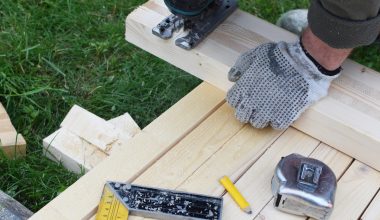Storm surges are a common natural disaster in the United States. They cause a significant amount of damage to property and land each year. Whilst completely protecting your home from storms is impossible, there are plenty of ways to reduce the damage surges cause.
Read on for our top tips on how to protect your home to prepare for a storm surge!
What is a storm surge?
Storm surges happen when sea levels rise during tropical cyclones, like typhoons or hurricanes. Strong winds push water onshore, causing flooding. It is important to know if your property is at risk of flooding, especially during the winter months. This is because coastal areas are especially at risk, due to the low height of the land.
Even if you do not live or own a business right next to a river or the sea, you might still be at risk of flooding from storm surges through surface or groundwater flooding. If your home or business is flooded, it can cost a lot to repair the damage caused by floodwaters. It can also be extremely emotionally and physically draining.

What can you do to protect your Property from a Surge?
The best advice for preparing for a storm surge to protect your home or business is to act before it happens. Finding out if you are in a flood-prone area and taking precautions early is the easiest way to limit the damage. There are many services that offer predictions on sea-level changes and what properties might be affected.
Don’t worry though, all is not lost if you are in a danger area. Buildings can be adapted and precautions can be put in place if you are in a susceptible storm surge zone.
Sealing Off From Flood Water
Doors can be made especially for keeping floodwaters out of houses, and door thresholds can be raised to make it harder for groundwater to pass inside. Walls and floors are easily sealed (also known as ‘tanking’) to stop water coming up through the ground in your building.
Air bricks are also available that are designed to go over ventilation bricks to minimize the water flow. It is also essential to surge-proof your drains and pipes. These are the main areas where water will flow in and out of your house. Non-return valves for drains are essential.
Extreme Precautions For The Biggest Storms
In the case of bigger floods caused by more aggressive storm surges, extra precautions to protect your house or business are needed. This might include fitting water-resistant skirting boards. Add a pump in the basement (if you have one) to remove floodwater before it gets too high.
Laying tiles with rugs rather than fitted carpets makes drying the house out much easier. Plus using water-resistant materials to fit out your kitchen and bathroom instead of woods and chipboards is also sensible.
It is also important to protect electrical items, as these can be very expensive to replace. Fix all of your television and speaker equipment to walls, around one-and-a-half meters above floor level. Raise electrical sockets and wiring to the same height, so they are less likely to be damaged during a flood.
What can you do to protect yourself?
As well as preparing your home and business for storm surges, protecting yourself is even more important. Storm surges can be a huge threat to life. Around 6 inches of running water is enough to knock an adult over. 2 feet of water is enough to sweep away a vehicle.
If you’re in a flood-prone area, sign up for a storm surge warning service to notify you when a surge is going to happen. In the U.S., the National Hurricane Center and Central Pacific Hurricane Center provide these services. This way, you’ll know if you need to get out of the area when a particularly dangerous storm surge is coming.
During a storm surge, keep large objects secured to the floor, and pack away anything which could be picked up by high winds. Large gardening equipment such as ride-on mowers should be raised on blocks and secured in your workshop.
Always keep an emergency kit to hand in case you have to leave in a hurry. This should include emergency contact numbers, home insurance documents, and some non-perishable food. It is also a good plan to have blankets, first-aid products, and torches for if there’s a power cut.
The best advice is to watch for local warnings, and evacuate if you’re told to!
Final Notes On Preparing For A Storm Surge
If you’re needing to protect your house and yourself from any potential storm surges, it’s better to take precautions early than when flooding is imminent. If you’re going to make permanent changes to a house or business then make sure to seek professional advice.
In an especially high-risk area, it’s essential to speak with a building surveyor or architect to make sure you’re preparing properly.
Protection measures can be quite costly. However, the cost of damage without protections is a lot higher. In the U.S., Hurricanes caused on average $5.2 billion worth of damage in the 73 years before 1997. Keep your future costs down, and protect your home from a storm surge before it happens!







1 comment
My sister would like to protect her home from a possible typhoon, and that is why she’s thinking of installing storm windows in it. Well, I also agree with you that it would be best to check the home for any logged pipes. We’ll keep in mind to look for home insurance too.